國際標(biāo)準(zhǔn)簡稱:ELECTRON COMMER RES
人氣 753
《Electronic Commerce Research》是一本專注于BUSINESS領(lǐng)域的English學(xué)術(shù)期刊,創(chuàng)刊于2001年,由Springer Nature出版商出版,出版周期4 issues per year。該刊發(fā)文范圍涵蓋BUSINESS等領(lǐng)域,旨在及時、準(zhǔn)確、全面地報道國內(nèi)外BUSINESS工作者在該領(lǐng)域的科學(xué)研究等工作中取得的經(jīng)驗、科研成果、技術(shù)革新、學(xué)術(shù)動態(tài)等。該刊已被SCIE、SSCI數(shù)據(jù)庫收錄,在中科院最新升級版分區(qū)表中,該刊分區(qū)信息為大類學(xué)科管理學(xué)4區(qū),2023年影響因子為3.7。
The Internet and the World Wide Web have brought a fundamental change in the way that individuals access data, information and services. Individuals have access to vast amounts of data, to experts and services that are not limited in time or space. This has forced business to change the way in which they conduct their commercial transactions with their end customers and with other businesses, resulting in the development of a global market through the Internet. The emergence of the Internet and electronic commerce raises many new research issues. The Electronic Commerce Research journal will serve as a forum for stimulating and disseminating research into all facets of electronic commerce - from research into core enabling technologies to work on assessing and understanding the implications of these technologies on societies, economies, businesses and individuals. The journal concentrates on theoretical as well as empirical research that leads to better understanding of electronic commerce and its implications. Topics covered by the journal include, but are not restricted to the following subjects as they relate to the Internet and electronic commerce: Dissemination of services through the Internet;Intelligent agents technologies and their impact;The global impact of electronic commerce;The economics of electronic commerce;Fraud reduction on the Internet;Mobile electronic commerce;Virtual electronic commerce systems;Application of computer and communication technologies to electronic commerce;Electronic market mechanisms and their impact;Auctioning over the Internet;Business models of Internet based companies;Service creation and provisioning;The job market created by the Internet and electronic commerce;Security, privacy, authorization and authentication of users and transactions on the Internet;Electronic data interc hange over the Internet;Electronic payment systems and electronic funds transfer;The impact of electronic commerce on organizational structures and processes;Supply chain management through the Internet;Marketing on the Internet;User adaptive advertisement;Standards in electronic commerce and their analysis;Metrics, measurement and prediction of user activity;On-line stock markets and financial trading;User devices for accessing the Internet and conducting electronic transactions;Efficient search techniques and engines on the WWW;Web based languages (e.g., HTML, XML, VRML, Java);Multimedia storage and distribution;Internet;Collaborative learning, gaming and work;Presentation page design techniques and tools;Virtual reality on the net and 3D visualization;Browsers and user interfaces;Web site management techniques and tools;Managing middleware to support electronic commerce;Web based education, and training;Electronic journals and publishing on the Internet;Legal issues, taxation and property rights;Modeling and design of networks to support Internet applications;Modeling, design and sizing of web site servers;Reliability of intensive on-line applications;Pervasive devices and pervasive computing in electronic commerce;Workflow for electronic commerce applications;Coordination technologies for electronic commerce;Personalization and mass customization technologies;Marketing and customer relationship management in electronic commerce;Service creation and provisioning. Audience: Academics and professionals involved in electronic commerce research and the application and use of the Internet. Managers, consultants, decision-makers and developers who value the use of electronic com merce research results. Special Issues: Electronic Commerce Research publishes from time to time a special issue of the devoted to a single subject area. If interested in serving as a guest editor for a special issue, please contact the Editor-in-Chief J. Christopher Westland at westland@uic.edu with a proposal for the special issue.
| 大類學(xué)科 | 分區(qū) | 小類學(xué)科 | 分區(qū) | Top期刊 | 綜述期刊 |
| 管理學(xué) | 4區(qū) | BUSINESS 商業(yè):管理 MANAGEMENT 管理學(xué) | 4區(qū) 4區(qū) | 否 | 否 |
| 大類學(xué)科 | 分區(qū) | 小類學(xué)科 | 分區(qū) | Top期刊 | 綜述期刊 |
| 管理學(xué) | 4區(qū) | BUSINESS 商業(yè):管理 MANAGEMENT 管理學(xué) | 4區(qū) 4區(qū) | 否 | 否 |
| 大類學(xué)科 | 分區(qū) | 小類學(xué)科 | 分區(qū) | Top期刊 | 綜述期刊 |
| 管理學(xué) | 3區(qū) | BUSINESS 商業(yè):管理 MANAGEMENT 管理學(xué) | 4區(qū) 4區(qū) | 否 | 否 |
| 大類學(xué)科 | 分區(qū) | 小類學(xué)科 | 分區(qū) | Top期刊 | 綜述期刊 |
| 管理學(xué) | 3區(qū) | BUSINESS 商業(yè):管理 MANAGEMENT 管理學(xué) | 4區(qū) 4區(qū) | 否 | 否 |
| 大類學(xué)科 | 分區(qū) | 小類學(xué)科 | 分區(qū) | Top期刊 | 綜述期刊 |
| 管理學(xué) | 4區(qū) | BUSINESS 商業(yè):管理 MANAGEMENT 管理學(xué) | 4區(qū) 4區(qū) | 否 | 否 |
中科院分區(qū):中科院分區(qū)是SCI期刊分區(qū)的一種,是由中國科學(xué)院國家科學(xué)圖書館制定出來的分區(qū)。主要有兩個版本,即基礎(chǔ)版和升級版。2019年中國科學(xué)院文獻情報中心期刊分區(qū)表推出了升級版,實現(xiàn)了基礎(chǔ)版和升級版的并存過渡;升級版是對基礎(chǔ)版的延續(xù)和改進,將期刊由基礎(chǔ)版的13個學(xué)科擴展至18個,科研評價將更加明確。
| 按JIF指標(biāo)學(xué)科分區(qū) | 收錄子集 | 分區(qū) | 排名 | 百分位 |
| 學(xué)科:BUSINESS | SSCI | Q2 | 107 / 302 |
64.7%
|
| 學(xué)科:MANAGEMENT | SSCI | Q2 | 137 / 401 |
66%
|
| 按JCI指標(biāo)學(xué)科分區(qū) | 收錄子集 | 分區(qū) | 排名 | 百分位 |
| 學(xué)科:BUSINESS | SSCI | Q2 | 101 / 302 |
66.72%
|
| 學(xué)科:MANAGEMENT | SSCI | Q2 | 150 / 402 |
62.81%
|
JCR分區(qū):JCR(Journal Citation Reports)由科睿唯安公司(前身為湯森路透)開發(fā)。JCR沒有設(shè)置大類,只將期刊分為176個具體學(xué)科,也就是中科院分區(qū)中的小類學(xué)科。基于不同學(xué)科的當(dāng)年影響因子高低進行排序,將期刊的數(shù)量均勻分為四個部分,Q1區(qū)代表學(xué)科分類中影響因子排名前25%的期刊,以此類推,Q2區(qū)為前25%-50%期刊,Q3區(qū)為前50%-75%期刊,Q4區(qū)為75%以后期刊。
CiteScore排名:
| 學(xué)科類別 | 分區(qū) | 排名 | 百分位 |
| 大類:Economics, Econometrics and Finance 小類:Economics, Econometrics and Finance (miscellaneous) | Q1 | 17 / 242 |
93%
|
| 大類:Economics, Econometrics and Finance 小類:Human-Computer Interaction | Q2 | 43 / 145 |
70%
|
CiteScore值計算方式:例如2024公布的CiteScore是將統(tǒng)計在 2020年-2023年間年所發(fā)表文章的引用次數(shù)除以在 2020年-2023年間所發(fā)表的發(fā)文總數(shù)。
CiteScore數(shù)據(jù)來源:是由全球著名學(xué)術(shù)出版商Elsevier(愛思唯爾)基于其Scopus數(shù)據(jù)庫推出的期刊評價指標(biāo)。CiteScore指數(shù)以四年區(qū)間為基準(zhǔn)來計算每本期刊的平均被引用次數(shù),并提供期刊領(lǐng)域排名、期刊分區(qū)的相關(guān)信息,它的作用是測量期刊的篇均影響力。
近年中科院分區(qū)趨勢圖
近年IF值(影響因子)趨勢圖
影響因子:是美國科學(xué)信息研究所(ISI)的期刊引證報告(JCR)中的一項數(shù)據(jù)。指的是某一期刊的文章在特定年份或時期被引用的頻率,是衡量學(xué)術(shù)期刊影響力的一個重要指標(biāo)。自1975年以來,每年定期發(fā)布于“期刊引證報告”(JCR)。
| 機構(gòu)名稱 | 發(fā)文量 |
| XIDIAN UNIVERSITY | 7 |
| HEFEI UNIVERSITY OF TECHNOLO... | 6 |
| RENMIN UNIVERSITY OF CHINA | 6 |
| UNIVERSITY OF ILLINOIS SYSTE... | 6 |
| BEIHANG UNIVERSITY | 4 |
| CHINESE ACADEMY OF SCIENCES | 4 |
| INDIAN INSTITUTE OF TECHNOLO... | 4 |
| MINIST EDUC | 4 |
| SHANGHAI UNIVERSITY | 4 |
| SOUTH CHINA UNIVERSITY OF TE... | 4 |
| 國家/地區(qū) | 發(fā)文量 |
| CHINA MAINLAND | 99 |
| USA | 30 |
| India | 13 |
| South Korea | 10 |
| England | 7 |
| GERMANY (FED REP GER) | 6 |
| Australia | 5 |
| Taiwan | 5 |
| Iran | 4 |
| Spain | 4 |
| 文章引用名稱 | 引用次數(shù) |
| A model for sentiment and em... | 20 |
| Knowledge mapping of social ... | 11 |
| Opinion evolution of online ... | 10 |
| Optimal dual-channel supply ... | 9 |
| Multi-layer affective comput... | 9 |
| What makes a helpful online ... | 8 |
| The interaction effects of i... | 8 |
| The role of dimensions of pe... | 7 |
| Measuring e-service quality ... | 7 |
| Personalized recommendation ... | 7 |
| 被引用期刊名稱 | 數(shù)量 |
| ELECTRON COMMER RES | 88 |
| SUSTAINABILITY-BASEL | 38 |
| COMPUT HUM BEHAV | 14 |
| J RETAIL CONSUM SERV | 13 |
| J ELECTRON COMMER RE | 12 |
| J BUS RES | 11 |
| ELECTRON COMMER R A | 10 |
| J THEOR APPL EL COMM | 10 |
| INFORM MANAGE-AMSTER | 9 |
| INT J ELECTRON COMM | 7 |
| 引用期刊名稱 | 數(shù)量 |
| ELECTRON COMMER RES | 88 |
| COMPUT HUM BEHAV | 42 |
| MIS QUART | 41 |
| ELECTRON COMMER R A | 37 |
| INFORM SYST RES | 32 |
| J MARKETING | 29 |
| J CONSUM RES | 27 |
| INT J ELECTRON COMM | 25 |
| J MARKETING RES | 23 |
| MANAGE SCI | 22 |
1、建議稿件控制10頁以上,文章撰寫語言為英語;(單欄格式,單倍行距,內(nèi)容10號字體,文稿類型包含:原創(chuàng)研究(Original Research)、案例報告(Case Report)、文獻綜述(Literature Review)等;文件格式包含word、PDF、LaTeX等。
2、稿件重復(fù)率控制10%以內(nèi),論文務(wù)必保證原創(chuàng)性、圖標(biāo)、公式、引文等要素齊備,保證附屬資料的完整。已發(fā)表或引用過度的文章將不會被出版和檢索,禁止一稿多投,拒絕抄襲、機械性的稿件。
3、稿件必須有較好的英語表達水平,有圖,有表,有公式,有數(shù)據(jù)或設(shè)計,有算法(方案,模型),實驗,仿真等;參考文獻控制25條以上,參考文獻引用一半以上控制在近5年以內(nèi)。
圖片和圖表要求:1、建議使用TIFF、EPS、JPEG格式 ,TIFF格式 使用LZW壓縮。
2、文件大小最大不超過20MB,不要以單個文件的形式上傳數(shù)據(jù)。
3、彩色圖片的分辨率≥300dpi;黑白圖片的分辨率在≥500dpi;line art圖片類型的分辨率≥1000dpi;色彩模式建議采用RGB,除非期刊注明要CMYK。
4、線條不要細于0.25pt,也不能太粗,超過1.5pt,過細或過粗都影響美觀。
5、表格一般和manuscrript放置在一個word文檔里部分期刊 需要單獨上傳表格。
作者信息:1、包括作者姓名、最高學(xué)位,作者單位(精確到部門),郵箱,地址,郵編,關(guān)鍵詞,內(nèi)容,總結(jié),項目基金,參考文獻,作者相片+簡介(一定要確保作者信息準(zhǔn)確無誤,提交稿件之后這部分不能再作改動)。
更多征稿細則請查閱雜志社征稿要求。本站專注期刊咨詢服務(wù)十年,確保SCI檢索,稿件信息安全保密,合乎學(xué)術(shù)規(guī)范不成功不收費,詳情請咨詢客服。
Electron. Commer. Res.
若用戶需要出版服務(wù),請聯(lián)系出版商:Electron. Commer. Res.。
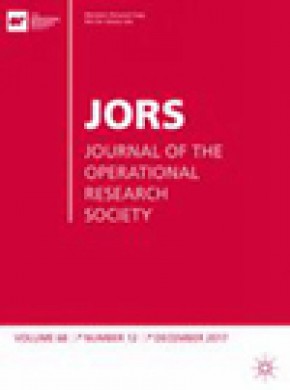
中科院分區(qū) 4區(qū)
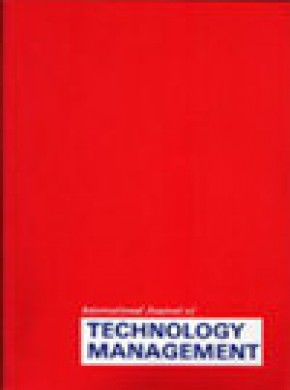
中科院分區(qū) 4區(qū)
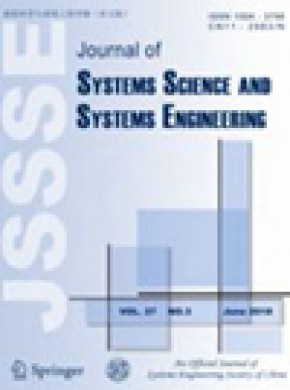
中科院分區(qū) 4區(qū)
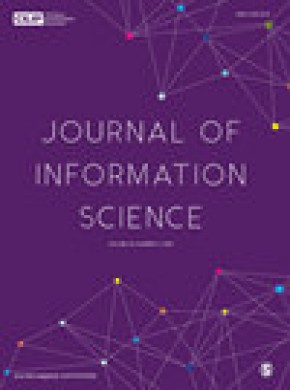
中科院分區(qū) 4區(qū)
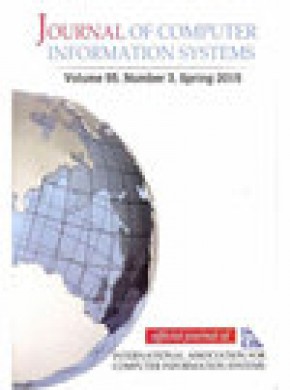
中科院分區(qū) 4區(qū)
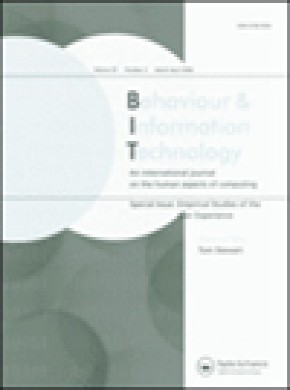
中科院分區(qū) 4區(qū)
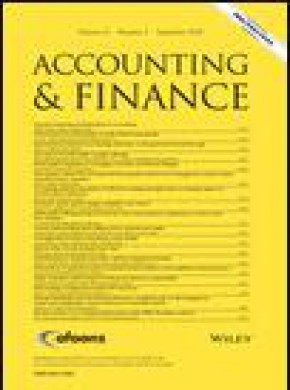
中科院分區(qū) 4區(qū)
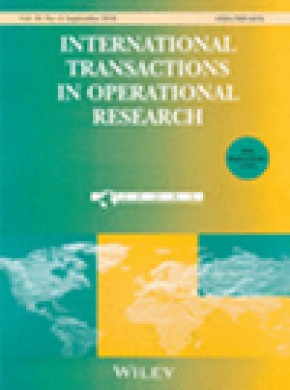
中科院分區(qū) 4區(qū)